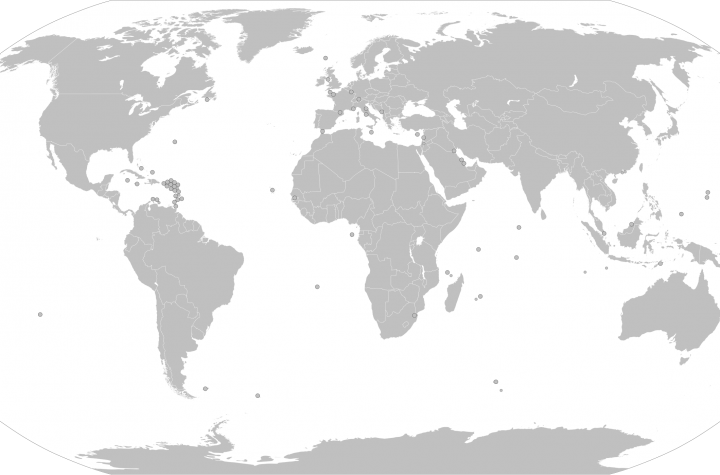
It is becoming accepted that tsunamis are the biggest threat to the population of Macedonia. There have been a number of devastating earthquakes and tsunamis documented in the Aegean sea.
In this article I will list the history of earthquakes and tsunamis and give my opinion on the risk faced by Thessaloniki today.
1303 Crete Earthquake & Tsunami
Massive damage around eastern Mediterranean, one imagines some waves would have made it to Thessaloniki
1600BC Minoan Eruption, Santorini
One of the biggest if not thee biggest eruption in human history. The tephra (volcanic material) layer from the eruption is visible in sediment layers throughout the Eastern Mediterranean. The date of the eruption is still debated.
The megatsunamis created by the Santorini eruption are reffered to here
Tsunami were generated during the Late Bronze Age (LBA) eruption of the island of Thera, in the southern Aegean Sea, by both caldera collapse, and by the entry of pyroclastic surges/flows and lahars/debris flows into the sea. Tsunami generated by caldera collapse propagated to the west producing deep-sea sedimentary deposits in the eastern Mediterranean Sea known as homogenites; open-ocean wave heights of about 1.9-17 m are estimated.
https://ui.adsabs.harvard.edu/abs/2000PApGe.157.1227M/abstract
Again, there is no direct naming of the Northern Aegean and Thessaloniki but I think it is safe to assume that waves of considerable size (for the Northern Aegean) would have made their way to the Thermaikos Gulf and caused massive damage leaving deposit layers
365 Crete earthquake
Again, the south Greece witnessed massive damage, probably reasonable to assume damage also in Thessaloniki but on a smaller scale. It is worth nothing that the tidal range in Thessaloniki is small and the sizes of waves experienced in Thessaloniki are also small (almost never more than 0.5m high) which would lead to be people living close to the water line with little to no protection from waves.
426 BC Malian Gulf Tsunami
This tsunami was probably not destructive to Thessaloniki as it occured in a gulf pointing away from Thessaloniki eg it did not occur in open sea but it is another reminder of Tsunamis and their destructive potential in the Aegean.
479 BC Potidaea Tsunami
During the siege of Potidaea a tsunami drowned the seiging Persians who used the retreating see as a land route to the town only to be swept away.
From the story, I would have to imagine that the Tsunami was relatively small. For the Persians to have been able to take advantage of the retreating sea I imagine they would have had to be relatively close to the town, within a few hundred meters. And given the town was not wiped out I think a wave of 2-3 meters would be the maximum height.
800BC & 900 AD Mende Tsunamis
Recent digging has revealed evidence of two tsunami layers in ancient Mende close to Thessaloniki
Reicherter and colleagues say their new findings suggest the Thermaikos Gulf where the peninsula is located should be included in tsunami hazard calculations, especially since the area is densely populated and home to many holiday resorts.
https://phys.org/news/2012-04-ancient-greek-tsunami.html
Evidence suggests Mende was inhabited until 300-400BC
600 BC Late Bronze Age Collapse
A collapse of the civilisations around the Aegean occurred around 600BC, the cause of which is unknown, volcanic activity is a proposed explanation.
which took place from the Late Bronze Age to the emerging Early Iron Age. It was a transition which historians believe was violent, sudden, and culturally disruptive, and involved societal collapse for some civilizations.
Thessaloniki was founded in 315BC and the building of the metro has revealed layers showing the development of the city until today.
Are you really going to destroy your Byzantine Pompeii?’ And he’s right. What reasonable person would even think of razing this road? How can you disturb something which has remained nearly undisturbed from the 6th century until today? To date, no one has dared touch it. Are we going to?”
https://www.greece-is.com/buried-treasure-thessalonikis-new-subway-brings-archaeological-wealth-light/
There is no mention (that I know of) of Thessaloniki or the previous city Therma being affected by earthquakes or tsunamis on massive scale.
In fact there is no mention of anything at all, there is no explanation for the buried layers except perhaps it was the natural development of the city.
Did the ruins and buried streets we see today end up like that because they were buried for new building?
Was there a period of abandonment in the city and the roads were buried due to nature?
Or was there an event or events that buried the area in silt and the city was repopulated after?
Palamari Skyros
It is not unusual to see sites abandoned and re inhabited in the Aegean. Palamari is a great example of a site being abandoned and re inhabited up to four times, granted before Thessaloniki was established.
Is it possible that similar periods have happened in more recent history? I believe there is but perhaps on a small scale.
In summary
There is plenty of evidence for sizeable Aegean tsunami activity in the recent pass ie last four thousand years.
The documented evidence for tsunamis in Thessaloniki is zero but there is evidence for tsunamis in the local area and it seems that more evidence is being found as time goes on.
I believe it is reasonable to imagine that Thessaloniki has been effected by tsunamis in its history, perhaps not on biblical scales but enough to cause disruption. Perhaps similar to the recent tsunami in Samos.
How often?
Looking at the dates of previous tsunami’s is every 400 years a fair assessment? What do you think? Let me know your thoughts below.
I will write a separate article looking at the geography around Thessaloniki and specifically around the Anthemous valley to see if there is anything that suggests that the area was affected by tsunami activity in the last four thousand or so years.
Subscribe for a notification






More Stories
Τροχαίο στη Βουλή: Την ενοχή του οδηγού για το θάνατο του Ιάσονα πρότεινε ο εισαγγελέας
Κωνσταντίνος Φλώρος: «Έχασα την ψυχραιμία μου» – Τι είπε στην απολογία του
Κ. Φλώρος: «Η μόνη δική μου ενέργεια ήταν να προσπαθήσω να πιάσω τον κ. Γραμμένο στο ύψος της μύτης»